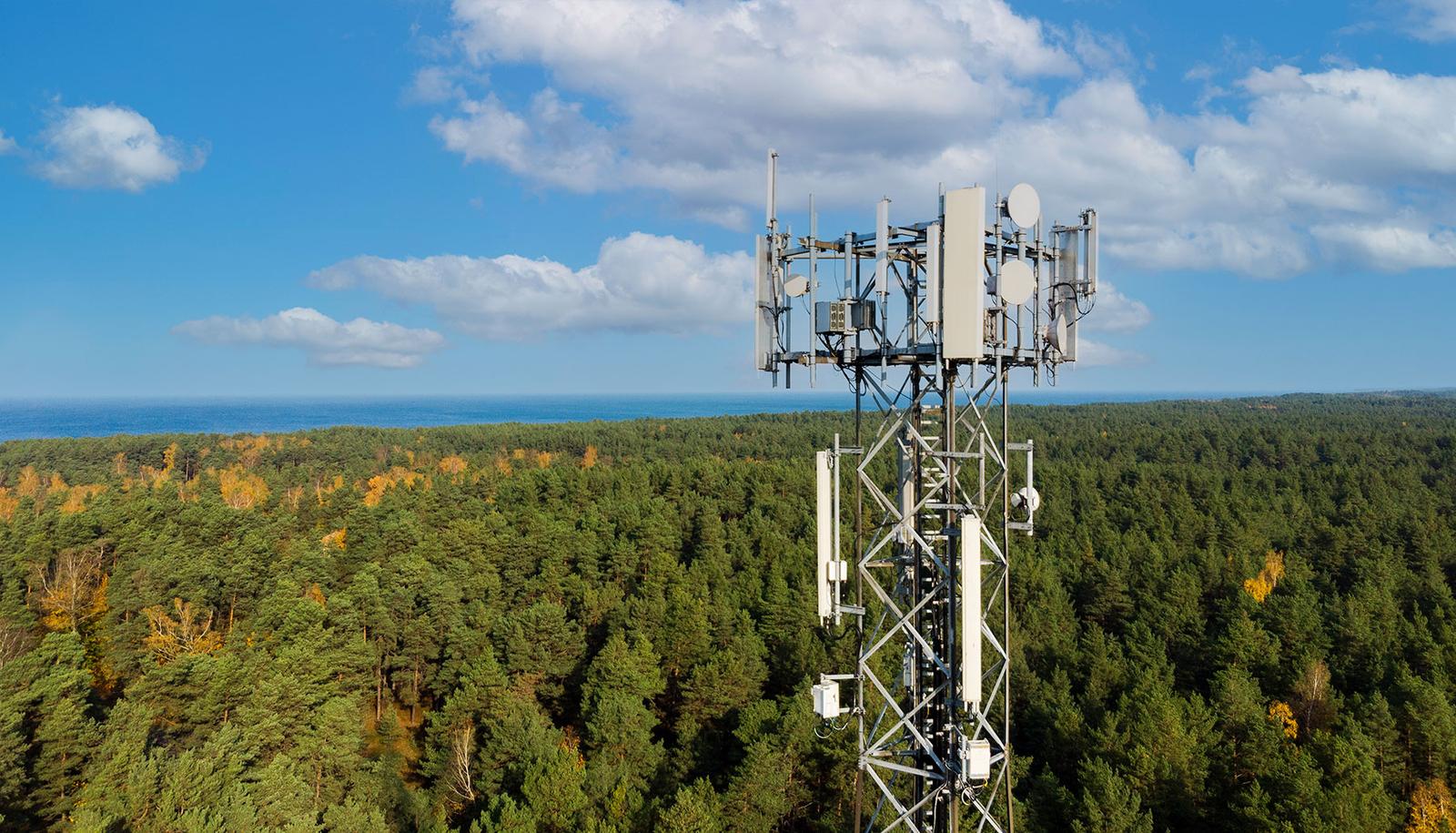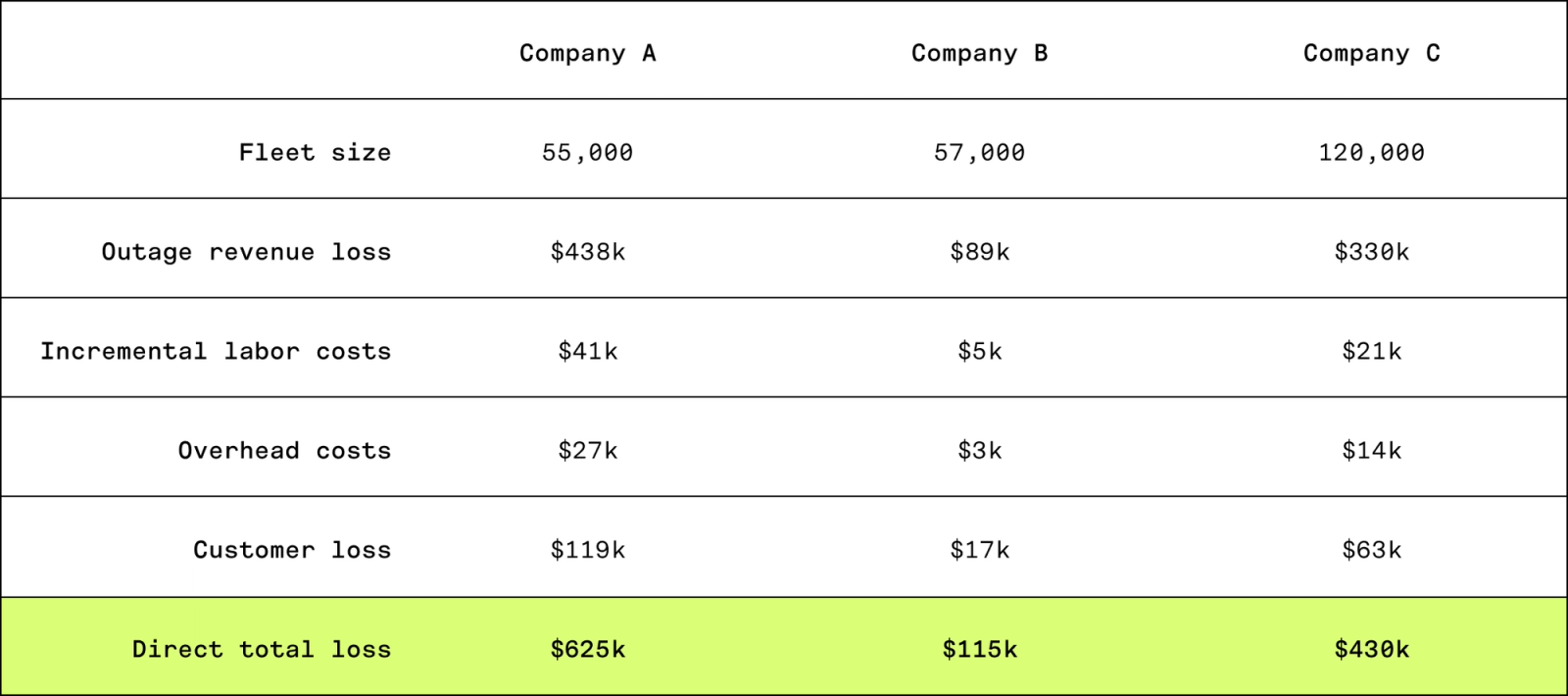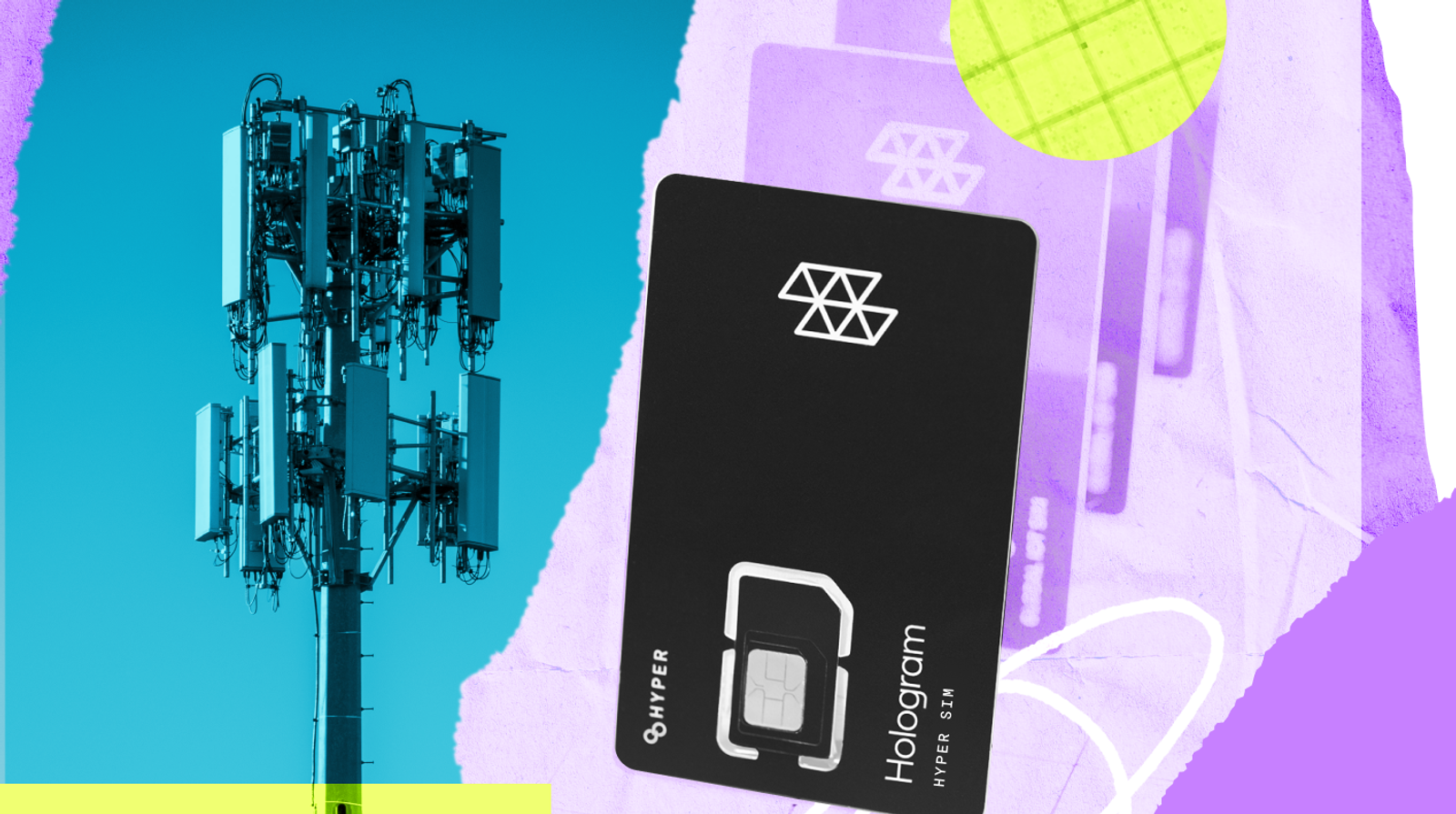Up and Running: The Guide to Eliminating IoT Downtime

Break the outage cycle
Headline-making cellular outages are increasingly common in our connected world. In 2023, we witnessed notable disruptions – from a five-hour blackout in China to a software update in Australia that severed mobile coverage for nearly half the nation.
When systems go down, the consequences for businesses are anything but trivial. Key revenue-driving operations can come to an abrupt halt, pushing companies into a state of costly operational limbo. For businesses that guarantee certain reliability, outages may result in contractual penalties and requirements for customer compensation. And beyond the direct financial impact, these incidents tank consumer trust, giving competitors a window to capture market share. Over time, this translates into a persistent decline in business.
However, it's not all doom and gloom. Outages don’t have to be an accepted norm. There are proactive steps you can take as well as new technologies that help you not only mitigate these incidents but actually eliminate downtime altogether.
In this e-book, we’ll look at the causes of outages, their impact (including real-world examples!), help you assess your risk and provide a roadmap to outage-proofing your business.
“Outages are the most painful to experience and one of the hardest problems to solve. But it doesn’t have to be that way.”
— Pat Wilbur, Co-founder & CTO, Hologram
What causes outages?
Cellular IoT connectivity relies on a complex set of variables and elements, all of which need to go right consistently and regularly for an IoT device to stay online.
There a few common issues behind many of IoT’s outages:
Mobile core infrastructure failures:
Mobile infrastructure includes the physical infrastructure (servers, data centers, etc) and software that allows a SIM to register with a mobile network and later connect and pass data to the internet. When this infrastructure encounters issues, the ripple effect can be massive, often disconnecting all devices from the network.
Network overload:
This can occur when too many devices try to connect to a single carrier network or a localized tower at the same time, overwhelming the system.
Software bugs in cloud-based systems:
More of the telco world is now run through cloud service providers, introducing a greater risk of software bugs.
Hardware and environmental challenges:
Failures in device hardware, like batteries, along with extreme weather conditions, can disrupt IoT connections.
Carriers and mobile network operators carry accountability for mobile core failures, network overloads and bugs, while customers generally hold the keys to the hardware. Overall, many of the causes of outages are outside the control of businesses.
“It’s almost guaranteed in cellular that multiple times per year there will be some major network somewhere in the world that goes down. Without a connectivity solution that truly has redundant back-ups in place, you're constantly dodging the bullet of your network’s next outage.”
— Pat Wilbur, Co-founder & CTO
How catastrophic outages happen
Outages caused by mobile core infrastructure failures can have particularly bad consequences – and they’re hard to avoid. Here’s why.
Most IoT devices today use eUICC SIM cards, allowing them to connect directly to a wide variety of global carriers. If there’s local network congestion or an overloaded tower, the SIM can simply switch over to roam onto the next available local network. However, if something goes wrong with the mobile core infrastructure that prevents the device from connecting to any of the networks, that’s where catastrophic outages occur.

Any problem in the infrastructure creates a single point of failure. Because these outages have complex root causes, they often last several hours to days. And unfortunately, most major networks are prone to experience them multiple times a year.
The hidden costs of downtime: A closer look
While at first glance outages may seem a temporary frustration, the ripple effect can extend far into the future, with lasting implications on your company's bottom line and public perception. Let's look at how these outages can translate into tangible financial setbacks and intangible, yet critical, brand image erosion.
Financial loss:
- Loss of revenue from POS systems or other revenue-generating devices
- Failure to meet up-time guarantees, with contractual penalties and refunds
- Increased emergency response, troubleshooting and repair costs
- Compensation for the inconvenience and losses caused by the outage
Brand and reputational damage:
- Eroded customer trust, especially in critical devices like security systems and remote patient monitoring
- Poor perception of your quality and dependability compared to competitors
- Long-term brand risk from legal/compliance breaches and scrutiny
Three real-world outage examples
Catastrophic outages can lead to substantial six-figure revenue losses and a range of financial impacts, from direct sales losses to operational and labor overhead.
Here, we look at three real companies and the impact of an outage on their costs. With larger fleets of devices often come higher costs, putting certain industries at greater risk.

How risky is an outage for my business?
Is an outage really that big of a deal for your specific business model? Ask yourself the questions below to gauge the severity of an outage on your business:
- Does your product require real-time connection to operate safely?
- Do you require connectivity to process transactions or generate revenue?
- Would downtime force you to make operational changes? (For example, if you're a micro mobility company and your devices don't connect, there is a risk that your municipal or city partners might ask you to pull those devices from the street.)
- Do you have uptime requirements contractually with your customers?
- Do you have regulatory requirements that are placed upon your product that require you certain availability or periods of non-interruption?
If you answered yes to one or more of these questions, it’s time to build an outage response plan and look for a connectivity partner who can work to dramatically minimize your downtime.

Industries at risk
Certain devices are most at risk of negative impact from an outage, including devices that operate autonomously, require real-time analytics or command and control, need to connect to the internet to process transactions, or impact human health and safety. This means the impact of outages can be more severe on certain industries, including:
- Autonomous vehicles or robotics
- Trucking and supply chain logistics
- Industrial automation and control
- Remote patient monitoring and healthcare
- Workforce monitoring and safety
- Micro-mobility services
Outage response planning: A checklist for businesses
No one has the power to avoid catastrophic outages altogether, but there are several critical steps that can reduce the risk of more minor outages and the impact they have:
Make regular system updates
Keep firmware up-to-date, with the ability to make over-the-air changes. This ensures that your devices are always running the latest software, reducing vulnerabilities and improving performance. Proactively monitoring system health allows you to identify and address issues before they escalate into full-blown outages.
Choose reliable hardware
Opting for high-quality hardware might seem more expensive upfront, but it pays off in the long run. Superior materials and construction lead to enhanced durability and longer life spans for your devices. This not only reduces the frequency of outages but also lowers the overall cost of maintenance and replacement, safeguarding your investment.
Build a playbook for outages
This should outline the specific steps to be taken in the event of an outage, including how to quickly diagnose and resolve issues. Designate a point person who can immediately take charge in these situations. Equally important is your communication strategy with customers, keeping them informed and engaged during disruptions, which helps maintain trust and transparency.
Improve fault tolerance and recovery
Devices designed with fault tolerance in mind can continue operating even when certain components fail. This design philosophy minimizes the impact of small issues, preventing them from escalating into larger problems. Quick recovery features allow devices to resume normal operations with minimal delay after an outage.
Employ redundant connectivity solutions
These solutions involve having backup networks that automatically take over in case the primary system fails. This significantly reduces the risk of downtime, even if one network experiences an issue.
Bottom line: You can reduce your outage risk
Cellular outages aren’t going away, but your approach to them can seriously lessen their impact. It's important to understand root causes, take steps to mitigate the fallout, and proactively ask your providers about outage protection, so you have the best possible partner at your side.

Hologram’s Dual-Core SIMs: The strongest outage protection in IoT history
Say goodbye to downtime with Hologram’s Dual-Core Performance and Dual-Core Global SIMs – engineered with redundant backup connections so your IoT devices remain online.
Dual cores, zero downtime
Hologram's Dual-Core SIMs feature two fully independent mobile core networks, connecting you to leading Tier-1 providers in the US, Canada and 200+ countries across the globe. If one network fails, your device will seamlessly switch to a backup. It’s the industry's first truly fail-safe connectivity solution.
Contractually-guaranteed reliability
We’re so confident in our network that if you do experience any outage, we’ll foot the bill.
The Hologram Promise
Minimize outages by automatically switching to an entirely different mobile core if your primary network fails, providing an fully independent path to connectivity.
Access top-performing global networks with comprehensive global coverage.
Reduce the risk that one single network glitch will derail your device.
Hologram also offers Dual-Core Performance SIMs, connecting you to Tier-1 providers – Verizon in the US or TELUS in Canada – backed up by a global roaming profile. With low latency and high throughput, these SIMS are designed for high performance.